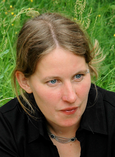Project
Submerged drains in the model project "Gnarrenburger Moor"
![[Translate to English:]](/media/_processed_/0/8/csm_gnarrenburg_MG_5784_76068ae744.jpg)
Model project Gnarrenburger Moor
How do raised groundwater levels by submerged drains influence greenhouse gas emissions and water quality in intensively managed grassland on bog peat?
Background and Objective
Drainage of peatlands causes high emissions of greenhouse gases (GHG), particularly of carbon dioxide (CO2), and leads to a strong subsidence of the land surface. At the same time, drained peatlands may be productive grassland sites. Thus, approaches to mitigate emissions while maintaining grassland productivity are urgently sought. The pilot project “Gnarrenburger Moor” is funded by the Lower-Saxony programme “Climate protection by peatland development”. Main tasks are the development of the scientific basis for agriculture extension and thus of land use and mitigation options for agriculture at peatland sites. One approach could be the installation of submerged drains, which are investigated in this part of the project. “Submerged drains” are installed with narrow drainage distance, and their outlets are submerged below the ditch water level. Thus, the groundwater level is kept on relatively constant high level, while the drains still ensure trafficability of the land surface.
Previous studies on the effects of submerged drains are limited to the determination of subsidence rates or on the scale of small experimental parcels (see also SWAMPS). Nutrient cycling strongly correlates with oxygen availability and is thereby also being dependent on water level. Despite this, there is, in contrast to mineral soils, so far only limited data on the influence of submerged drains on water quality in peat soils.
The pilot project “Gnarrenburger Moor – submerged drains in a field-scale trial” aims at testing submerged drains for the first time at the field scale under regular agricultural management while measuring the exchange of CO2 with the eddy-covariance method. As the eddy-covariance method allows a quasi-continuous determination of CO2 fluxes, this approach will improve our understanding of underlying processes and of the immediate reaction of the study area on changes in water management. In addition to the GHG fluxes, the effects of raised water levels on water quality will be quantified.
The joint research project “Model project Gnarrenburger Moor” is coordinated by the State Authority for Mining, Energy and Geology Lower Saxony (LBEG), who is also responsible for water management and hydrology. The Chamber of Agriculture Lower-Saxony evaluates grass biomass quantity and quality. The team of the Thünen Institute of Climate-Smart Agriculture measures greenhouse gas exchange and water quality.
Approach
At a grassland on bog peat in the “Gnarrenburger Moor” (North-Western Germany), groundwater levels are raised by submerged drains to around 30 to 40 cm below ground. A nearby reference site is, as typical for the region, deeply drained by ditches and drainage pipes (drainage depth around 80 cm). At both sites, the exchange of CO2 is continuously measured with the eddy-covariance method. The exchange of nitrous oxide and methane is determined during campaigns by manual chambers measurements.
To assess the impact of submerged drains on water quality, we sample soil water, drainage pipes and ditches. Water samples are analysed for nitrogen and phosphorous compounds as well as for dissolved organic carbon (DOC).
Furthermore, we gather hydrological data (e.g. groundwater levels, soil moisture and discharge) to assess water demand of submerged drains, to quantify solute losses and to simulate management scenarios.
Links and Downloads
https://www.lwk-niedersachsen.de/index.cfm/portal/6/nav/198/article/29689.html
Thünen-Contact

Involved Thünen-Partners
Involved external Thünen-Partners
-
Landesamt für Bergbau , Energie und Geologie (LBEG)
(Hannover, Deutschland) - Landwirtschaftskammer Niedersachsen
(Oldenburg, Uelzen, Hannover, Deutschland)
Funding Body
-
Bundesland Niedersachsen
(national, öffentlich) -
European Union (EU)
(international, öffentlich)
Duration
2.2018 - 3.2023
More Information
Project status:
ongoing
Publications
- 0
Kalinski K, Höper H, Bockelmann J, Brümmer C, Dettmann U, Düvel D, Kruse-Dörgeloh H, Lange G, Lübke C, Meinardi D, Offermanns L, Röttcher K, Rüffer J, Schröder U, Tiemeyer B (2023) Abschlussbericht Modellprojekt Gnarrenburger Moor : Gebietskonzept und Wassermanagement & Unterflurbewässerung im Praxisversuch. 238 p
- 1
Offermanns L, Tiemeyer B, Dettmann U, Rüffer J, Düvel D, Vogel I, Brümmer C (2023) High greenhouse gas emissions after grassland renewal on bog peat soil. Agric Forest Meteorol 331:109309, DOI:10.1016/j.agrformet.2023.109309

![[Translate to English:] [Translate to English:]](/media/_processed_/6/4/csm_titel_CO2Kampagne8_afeea2273e.png)
![[Translate to English:] [Translate to English:]](/media/_processed_/4/1/csm_titel_93px_CO2Kampagne8_9b0f3354d4.png)

![[Translate to English:] Logo des Bundesministerium für Ernährung und Landwirtschaft](/media/allgemein/logos/BMEL_Logo.svg)